论述现代游戏设计的10大常见错误
作者:Tyler Wilde
制作游戏很难,但要挑刺很简单。当然我们是爱之深,责之切。我们是将游戏看作优质内容,所以才会这么在意作品存在的问题。
我们会忽略小瑕疵,但若是问题像如下陈述的内容那般严重,我们只能将其逐一列出。我们所提意见都富有建设性。
1. 令人费解的谜题
有人觉得来回周旋于某区域以期找到出口富有趣味?这些“谜题”全然算不上谜题。玩家无法破解内容,只会逐步远离正确地图位置。我们原本应该爬过远处的隐蔽出口。虽然《半条命2》是非常杰出的作品,但游戏还是存在众多“穿过出口”的内容。
有时内容更含糊不清。这不是A+B=C,这是A+感觉合适的内容=在困境中左转。常因这类荒谬内容而遭受批评的游戏主要是典型点击式探险游戏(游戏邦注:但这也是它们魅力所在)。关于这点,我们可以原谅它们。但和现代艺术一样,只要存在这类内容,作品就算不上优秀。
2. “不明真相”的AI
编程问题不属于“游戏设计”,但我们接触的是最终成品,而不是杰出人士的内心构想。游戏设计不仅包括内容的预期运行方式,还包括其实际运作情况。
多数游戏AI的运作情况如何?就像刚吃下具有催眠效果感冒药的3岁小孩。NPC似乎从来都不清楚周围情况,而且从表面看设计师似乎全然无需变革AI编程图像,赋予它们些许意识。
多少次你超越自己的虚拟上司,而它却像个残缺的发条娃娃慢吞吞地朝你们的下个目标前进?也许这不是开发者的错,我们没有亲身追踪这些僵尸般的角色,但开发者所要做只是调整其中的一句对白,这样我们的怀疑就会消失。
更糟的情况是注意不集中的NPC。以《Fallout 3》为例:玩家当面射击中立NPC,然后它变得狂暴,而玩家又上前时,它居然还会说:“最近如何?”结束会话后,他又直接重击你。也许当我们试图杀死某人时,游戏可以关闭会话。
3. 快速反应按键
我们不喜欢这些内容(游戏邦注:有些情况除外),无论这将游戏变得多么富有“戏剧色彩”。回应按键提示内容在节奏游戏中颇具趣味,但假设在游戏炮战中,屏幕突然出现大大的黄色“Y”标记,我们多半不会觉得“这多么富有戏剧色彩。”
4. 在不必要的地方融入故事元素
不是所有游戏都需要故事元素,《生存之旅4》就是个典型例子。包含若干优质角色和简单情境就已足够,融入更多内容则毫无意义。在射击或RTS游戏中,我们所要把握的内容是战斗对象及战斗理由。这值得我们花时间。
在很多游戏中,这些都值得我们投入时间,但同样在很多其他游戏中,我完全不关心这些内容。我们以为自己关心这些内容,因为我们喜欢游戏,但其实我们毫不在意。《光晕》故事内容原本进一步简化,这样我们还会享受其中。若我们没有花时间探究游戏存在的问题,我们也许会更喜欢这款游戏。
我们不需要大量“拯救某人”的任务。它们存在的唯一理由是某人觉得我们需要更多多元化的内容,相信后续还有故事发展。别自找麻烦!给予我们射击坏人的理由,我们就会射击他们。只要挑战不会让我们觉得矫揉造作,我们就会享受其中。
5. 无故改变整个玩法风格
现在是boss时间——抛开其他东西,专注于最后的3个小时。
我们知道boss是很难应付的角色,但这并不意味着它们需要摒弃游戏的既有机制。内容应基于既有机制——让我们运用自己的所学。不要让我们发现,游戏之前赋予我们的超能量武器突然变得毫无用处。
6. 未提供保存操作
我有些疲惫,想要睡一觉,我不想整夜将掌机设成暂停状态。为什么有些开发者如此害怕让我们保存游戏内容?若你觉得大方提供保存节点会让你的游戏变得过于简单,那你就大错特错。
我们不介意在必要时候重新消灭大批敌人。我们希望通过保存避开的内容是,穿梭于空荡的走廊,重新整理我们的存货。游戏的难点不应完全体现在将我们置于死地或重做大量乏味内容。若我们在大型炮战中死去,游戏应让我们回到战斗前的不远处,这样我们就能够准备新策略,重新来过。不要让我们闲逛5分钟。
7. 过于复杂
若你在游戏中嵌入500把枪支或车辆,那么游戏的暴力场面就过于复杂,这缺乏可行性。深刻玩法源自于有限变量间的丰富互动。
若游戏融入过多内容,我们只会感到失望。我们无法记住游戏包含的所有细节内容,所以我们无从判断什么内容更突出。最终结果是,我们会忽略一半游戏内容,那么这些辛苦工作就都完全白费。相反,开发者应限制武器或更新内容的数量,将其变得更富趣味性。赋予这些元素更多属性,将其变得更有趣,促使玩家希望得到这些内容。
也许唯一不存在此问题的内容就是MMO游戏。MMO游戏不存在植入许多内容的问题,因为玩家通常持续体验这类游戏很长时间。
8. 随意限制玩家
若你制作的是款策略游戏,不妨设置包含预期变量组合的小规模战斗,虽然这会破坏你已创建的“宇宙空间”。若你制作的是多人游戏,不要将玩家置于策略模式中。游戏可以融入这些元素,但我们想要的是Free for All、Team Deathmatch、Survival和Capture the Flag类型的内容(游戏邦注:不要要求玩家以自己期望的方式操作内容)。
这对很多RPG游戏来说也是如此。若核心关卡任务已完成,但故事中主角还未死去,我们为什么不能够回到前面,操作自己错过的次要任务?我们只是想要更深入地探索游戏空间。与此相反,我们通常要么得在“完成”游戏前加载保存节点,要么得重头开始游戏。
9. 未显示足够信息
显然我们需要投入额外精力以确保游戏世界在终极恶人被打败后依然富有意义,但加载熟悉的保存内容,然后重新操作毫无关系的关卡任务似乎是非常愚蠢的做法。
我们得在无形“巨大岩石”坠落前,跳至远处的平台,岩石会消灭玩家,但我们无从知晓其何时会降落。
游戏一直都忽略某些信息。部分原因在于一些开发者想去除同“沉浸感”冲突的HUD和界面元素。这致使基于数据的游戏未能向我们呈现相关数据。另一原因则在于糟糕的设计。你应该让玩家知晓自己要如何操作,否则他们将非常沮丧。
《生化危机5》在此所存在的问题并没有达到致使游戏失去趣味的程度,但依然有所不足。同某女士的boss战斗需要玩家重复进行相同操作(游戏邦注:从中未获得丝毫进展)。游戏需要给予相关指示,让玩家知晓自己的操作有产生一定影响。玩家无法看到代码,无法读出设计师的心声,若玩家所要操作的内容完全随机,那他们要如何知晓?
10. 无法跳过的枯燥内容
这是最糟糕的情况。
玩家应要能够跳过所有过场动画。我们不在乎动画师如何以此为豪,或者其对我们收获乐趣有多么重要。我们关心的是如何体验游戏。如果我们是第二次玩这款游戏呢?我们是否还需观看此内容?
无法跳过的枯燥内容不只是过场动画。这包含任何能够自动化或被去除的重复任务。不要在我们每次出售弹药时都弹出3条提示信息。不要在所有游戏关卡中都植入上锁的门,然后期望我们逐一进行试验,直到找到1%的未上锁的门(游戏邦注:如《寂静岭:归乡》)。不要让我们连续10小时都进行机械操作,然后将此称作“玩法”。
游戏邦注:原文发布于2009年5月22日,文章叙述以当时为背景。(本文为游戏邦/gamerboom.com编译,拒绝任何不保留版权的转载,如需转载请联系:游戏邦)
The 10 most common game design mistakes
By Tyler Wilde
Making games is hard. Making fun of them isn’t. It’s really, really easy, actually. Of course, we wouldn’t be so critical if we didn’t love them so damn much (and if we weren’t, you know, critics). We think games are just the bee’s knees, and that’s why we get so pissed about all the stupid crap they do.
We can forgive the small things, but when they’re as painful and inexplicably chronic as the 10 below, we’ve got to act in the only way we know how – by making a list. It wasn’t hard to think of 10 things game developers constantly irk us with – we could have geeked on and on about 20, even 30, but we aren’t trying to nitpick…well, yes we are…but we aren’t trying to rub hydrochloric acid into gaping chest wounds. We’re being constructive!
10. Incomprehensible puzzles
Does anyone think that running back and forth across an area looking for the exit is fun? These “puzzles” are not really puzzles at all. There’s no figuring them out, only stumbling onto the right bit of the map. OH, we were supposed to crawl through that vent over there that was really hard to see. As great as it is, Half-Life 2 is full of “go through the vent” moments.
Sometimes they’re even more obtuse than that. It isn’t A + B = C, it’s A + whatever the hell they felt like = turn left at the pickle. The games most commonly criticized for this kind of absurdity are classic point-and-click adventure games – but that was sort of part of their charm. We forgive them for that. But much like modern art, once it’s done, it’s not cool anymore.
9. Clueless AI
Programming quirks aren’t always considered aspects of “game design,” but we interact with the final product, not the ideal inside of some luminary’s head. The design not only includes how the game is supposed to work, but how it actually works.
And how do most game’s AIs work? Like three-year-olds who just had spoonfuls of extra-drowsy cold medicine. NPCs never seem to have any idea what’s going on around them, and it doesn’t seem like anyone needs to revolutionize the art of AI programming to give them a just little more awareness.
How many times have you run circles around your supposed leader while he shuffles toward your next objective like a defective wind-up toy? Maybe it’s not the developer’s fault that we don’t play along and creep around behind their zombie-like characters, but all they’d have to do is change one line of dialog and our suspension of disbelief would be maintained. “Follow me” becomes “Meet me there,” and voila!
What’s worse are NPCs with the attention spans of caffeine-addled Jack Russell Terriers. Take Fallout 3 for example: Shoot a neutral NPC in the face and he goes berserk, as he should, but then get close enough to talk to him, and he’s all “Gee, how are ya?” WE JUST SHOT YOU IN THE FACE YOU STUPID SHIT. End the conversation and he goes straight back to whacking you with a pipe. Maybe, just maybe, dialog could be disabled when we’re in the middle of killing someone.
8. Quick time events
With just a few exceptions, we don’t like these, no matter how “cinematic” they make the game. In fact, if the word “cinematic” ever enters your head, you’re probably doing it wrong. Reacting to button-prompts is fun in rhythm games, but when a big yellow ‘Y’ pops into the middle of our screen during a firefight, the last thing we’re thinking is “Gee, how cinematic.”
7. Injecting story where it isn’t needed
Not every game needs a story. Left 4 Dead is a prime example. Some good characters and a simple situation is enough, and any more would be pointless. All we really need to know in a shooter or RTS is who we’re fighting, and why we’re fighting them. Any more and it better be worth our time.
It is worth our time in a lot of games, but in just as many others we really don’t care. We think we care, because we like the game, but we don’t. Halo’s story could have been drastically simplified and we still would have enjoyed it. We might even have enjoyed it more, because we wouldn’t have spent so much time picking apart its convolution.
We don’t need more “go rescue so-and-so” or “plant five charges” missions. They only exist because someone thought we needed variety (as if repetitive tasks are variety), and more convincing that there’s a story going on somewhere behind-the-scenes. Don’t bother! Give us a good reason to shoot the bad guys and we’ll shoot the bad guys. Offer challenges that weren’t contrived to make us feel all storied up, and we promise we’ll still have fun.
6. Changing the entire gameplay style without a good reason
Ok, it’s time for a boss – now FORGET EVERYTHING YOU’VE BEEN DOING FOR THE LAST THREE HOURS.
What? We know bosses are supposed to be hard, but that doesn’t mean they have to completely discard the game’s established mechanics. Build on the existing mechanics – let us use what we’ve learned. Oh, and don’t think we don’t realize that the super-powerful mega-weapon you gave us earlier is suddenly inexplicably useless.
This also applies to those annoying-ass driving levels that developers love to slap into the middle of shooters. Why the hell are we driving when we’ve spent the last ten levels shooting?
5. Fear of saves
I’m tired. I want to go to bed, and I don’t want to leave my stupid console paused all night. Why are some developers so terrified of letting us save our damn games? If you think being generous with save points will make your game too easy, you’re probably doing it wrong.
We don’t mind re-killing a bunch of dudes if we have to. What we want to avoid by saving often is walking through empty hallways and re-organizing our inventories. The difficulty of a game shouldn’t be entirely reliant on making us die and redo large, tedious sections of non-action. If we die in a big firefight, let us go back a little ways before that battle so that we can prepare a new strategy and jump back in. Don’t make us walk around for five minutes first.
We forgive you Capcom, but only because you’re so lovable.
4. Over-complication
“Depth” is not the same as “put a ton of shit in it.” If you’ve got to toss in 500 guns, cars, units, or unlockable whatevers, you’re taking the brute force approach to complexity, and it won’t work. A deep experience results from having a great variety of possible interactions between a limited number of variables.
If there’s too much stuff, we’ll only get frustrated. We can’t possibly remember the details of everything you crammed in, so we’ve got no idea what is better than what. The result is that we ignore half of it, and all that hard work goes unseen. Instead, limit the number of weapons, upgrades, and whatnots, and make them more interesting. Give them more attributes, make them more fun, and make us want them.
Perhaps the only exception to this complaint is MMOs. MMOs can get away with having tons of stuff, because you’re meant to play them for a billion hours.
3. Putting arbitrary limitations on the player
If you’re building strategy game, let us have a skirmish with any combination of variables we want, even if it breaks the “universe” you’ve established. If you’re making a multiplayer game, don’t force us into gimmicky modes. It’s fine to include them, but we always need the standard Free for All, Team Deathmatch, Survival, and Capture the Flag type stuff – don’t force us to play the way you want us to.
This is also true of many RPGs. If the main quest is over, but the story doesn’t involve the main character’s death, why can’t we go back and do the side-quests we missed? We just want to explore the world a bit more. Instead, we have to either load the save point before we “finished” the game, or start over from the beginning.
2. Withholding information
Granted, it would take some extra work to make sure the world still makes sense after the ultimate evil is defeated, but it just seems silly to load an old save just to go back and run through some completely unrelated quests.
Oh, we were supposed to jump onto that platform over there before the invisible “giant falling rock that crushes and kills you” timer that we had no way of knowing about ran out. Splendid.
Games are leaving out information – vital information – all the time. Part of it is the modern desire to do away with HUDs and interfaces that conflict with “immersion.” This leads to stat based games that never let us see the stats. The other part is just bad design. You do have to let the player know what they’re supposed to be doing, otherwise it’s all frustration and thrown controllers.
Resident Evil 5 doesn’t do this so much that it becomes un-fun, but it’s still guilty. A boss battle with a certain lady has you continually repeating the same action with no sign of progress. We need an indication that what we’re doing is working – something, anything! We can’t see the code, we can’t read the designer’s mind, and if what we’re supposed to be doing is completely arbitrary, then how do we know what it is?
1. Unskippable Tedium
This is the absolute worst.
Every cut-scene must be skippable every time. We don’t care how proud the animators are of them, or how important they supposedly are to our enjoyment. We’ll decide how to enjoy the game. And what if we’re playing it a second time? We still have to watch say… this?
Unskippable tedium isn’t just cut-scenes. It’s any repetitive task that could have been automated or eliminated. Don’t make us sell every bit of ammo we have one at a time with three prompts in between each transaction. Don’t stick locked doors all over your levels and then expect us to wander around trying each one until we find the one-in-one-hundred that’s unlocked. (Silent Hill: Homecoming, you scoundrel.) And definitely never make us grind for ten hours and call it “gameplay.”(Source:gamesradar)

























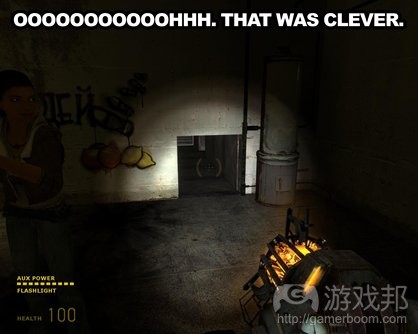

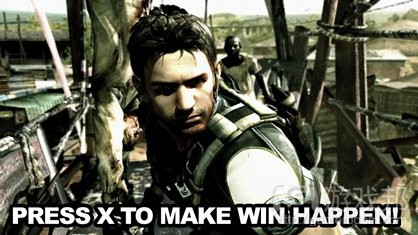
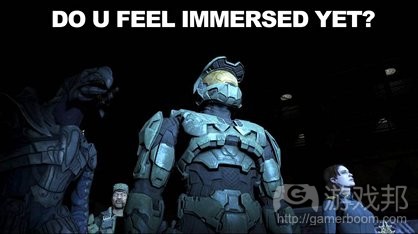
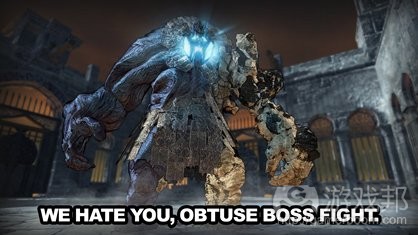
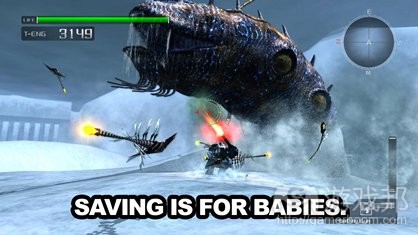
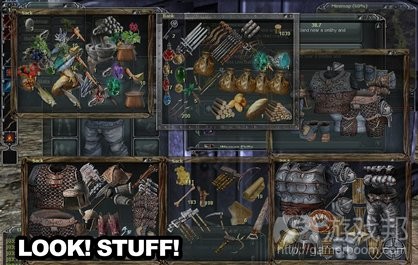
















 闽公网安备35020302001549号
闽公网安备35020302001549号